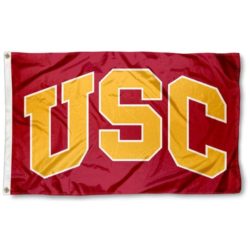USC football moves forward despite uncertainty surrounding potential spring season…
Yes, the Pac-12 had recently announced its new, conference-only schedule in an attempted adjustment in the middle of the ongoing pandemic, and training camps were allowed to begin on Aug. 17. But USC still didn’t have clearance from L.A. County to begin contact practices, and the likelihood of that happening on time was slim.
That, combined with the news about just-discovered health risks posed by COVID-19, had the Trojans pessimistic about the chances of a fall season. But that did little to shield them from disappointment when the announcement was made Tuesday that the Pac-12 was postponing all sports until the new calendar year.
“We all thought it was coming to a head at some point,” USC quarterback Kedon Slovis said Wednesday on a Zoom conference call, “but it was really sad to see that we knew we weren’t going to be able to play anymore.”
The news came at midday Tuesday. Some student-athletes, like Slovis, had to go to the weight room just an hour later. Then that evening, head coach Clay Helton addressed the team.
He told them of his disappointment for them, that they couldn’t play the season they had worked for. And he explained to them the medical information, specifically concerns that COVID-19 could lead to a heart condition called myocarditis, that led to the cancellation.
We’re all disappointed and sad,” Helton said Wednesday. “But when you look at it through a father’s eyes and you garner the information medically, not only do you have to respect that information but you have to support the decisions that are based behind it.”
The Pac-12 prepared for a potential fall season working under three assumptions: That weekly testing was adequate, that community spread would have decreased in the conference’s footprint by September, and that COVID-19 posed little threat to college-age athletes.
But those assumptions proved to not bear out, with the concerns about myocarditis bringing the whole operation to a halt.
Though Helton admits there are several questions that need to be answered about the viability of the spring option.
“The things that are going to come up are: Where are we in the world? Where are we with the infection rate? Where are we with testing?” Helton explained. “Where are we with the study of the heart and the damage this virus has done to it? How long is the season? And when does that season end? And is that enough time between not only that season and the fall?”
Safety Talanoa Hufanga likened playing two seasons in a calendar year to traditional spring practices, but acknowledged, “Two seasons in a year is definitely going to be tough on the body.”
And then there are questions about whether the entire team will be back for the spring.
Helton said he isn’t concerned (currently) about transfers. If a student-athlete transferred now to a conference like the SEC that is still planning on a fall season, he could be burned by a later cancellation by that league.
But there are Trojans who could be weighing NFL decisions. It was a topic that Helton addressed with the team Tuesday night, encouraging players to be patient in their process.
“Each person has their own decision to make. But if you take the time, don’t make an emotional decision,” Helton said. “Because as emotion goes up, sometimes intelligence goes down.”
Hufanga, who could be a top draft prospect in 2021, said he preferred to live in the moment than worry about the NFL at this time.
Then there are the existential questions that USC, and every other college program, faces. On Wednesday, Utah estimated that the postponement of the season would cost their athletic department between $50 million and $60 million in revenue.
Bohn said that estimate was likely accurate for USC, too.
“Obviously at USC, the football enterprise represents 80-85% of our revenue,” Bohn said. “But back to the Jan. 1 piece, if by then if what our doctors are telling us and what some of the projections are … who knows? We may be able to be in a different environment and be able to potentially have fans in the stands.”
So even with certainty about the fall, questions still loom. But despite that and the previous day’s disappointment, the USC football team was still up at 6:30 a.m. Wednesday for their workouts.
__________
TrojanDailyBlog members — Always feel free to add information or topics to the TDB which don’t necessarily pertain to any particular moderator post or member comment.

